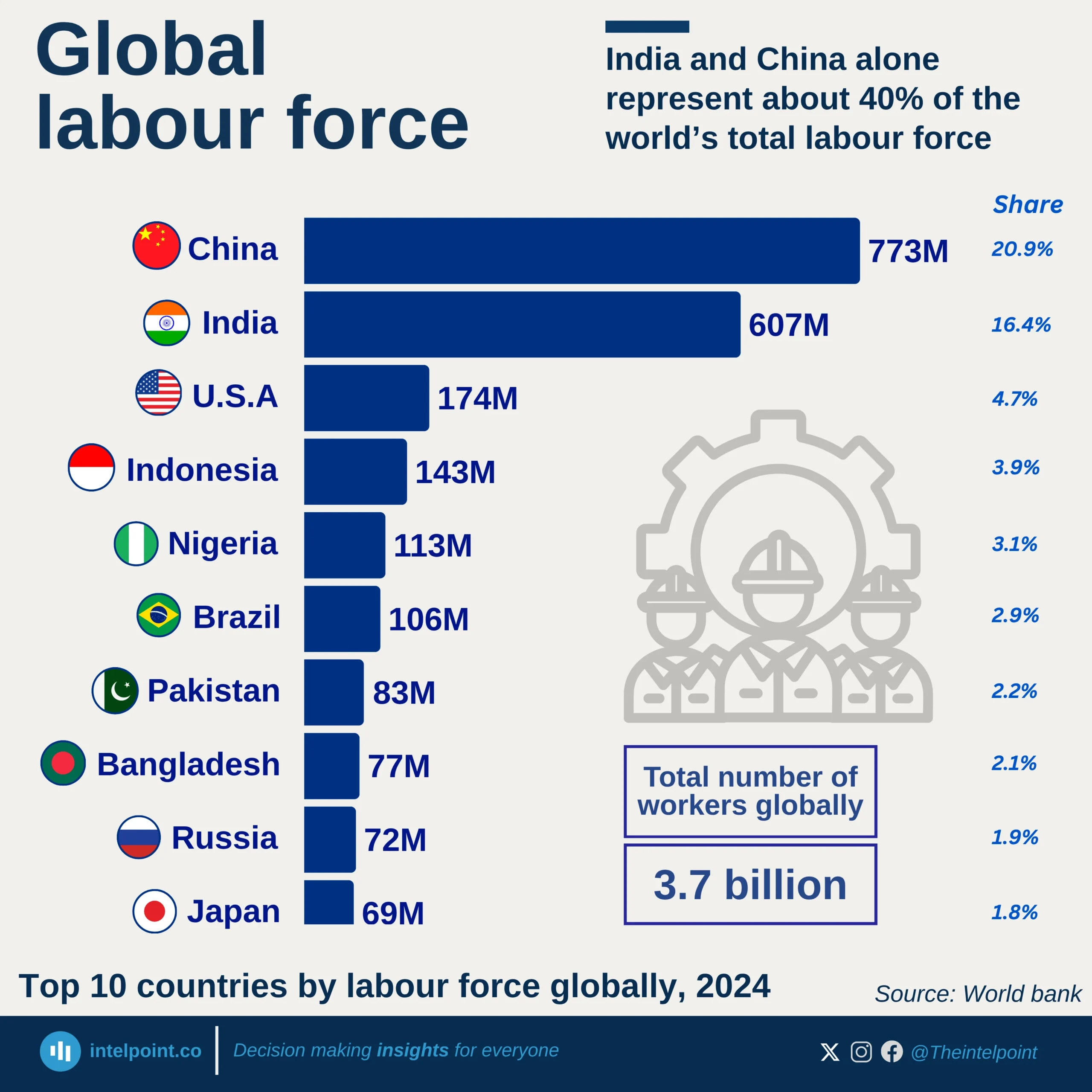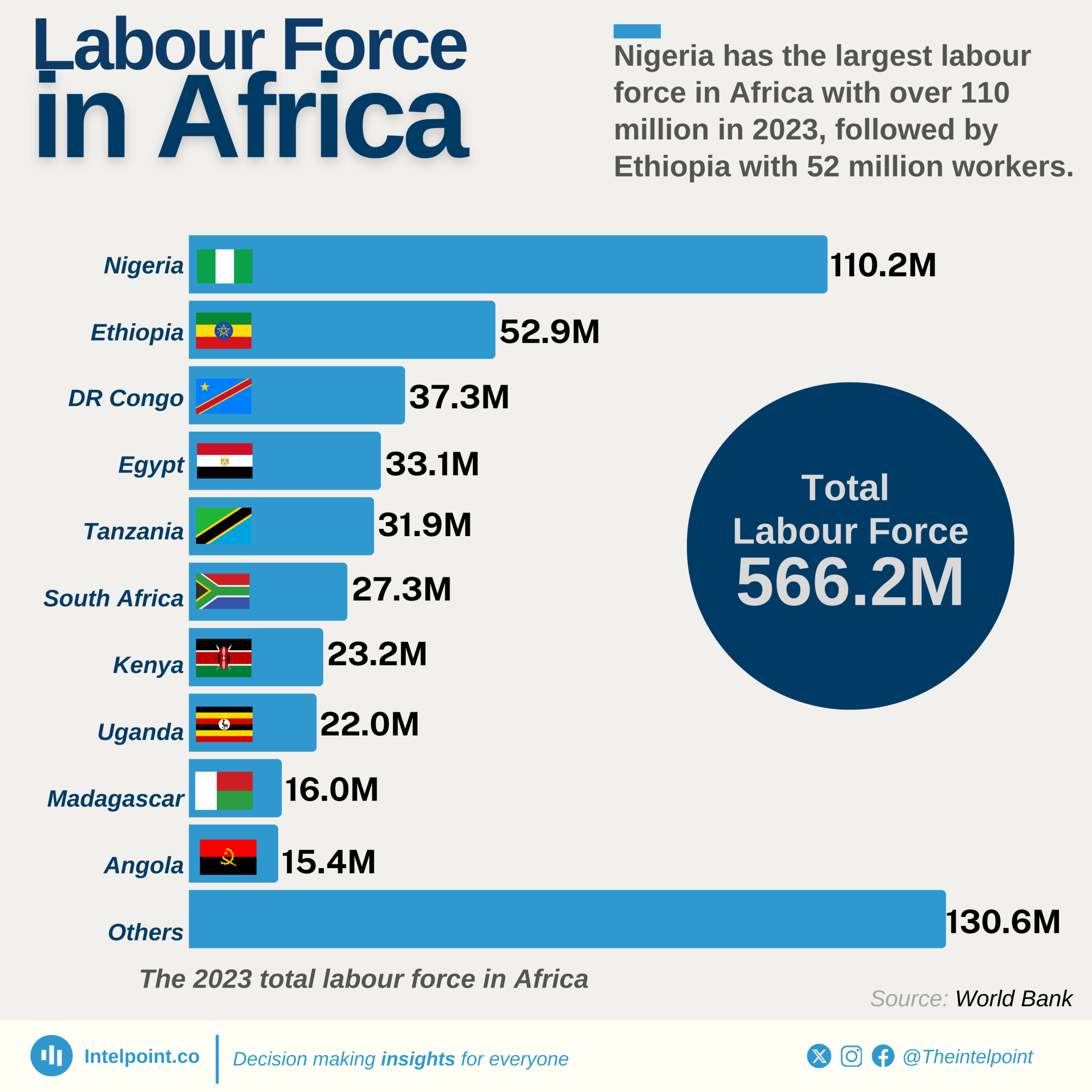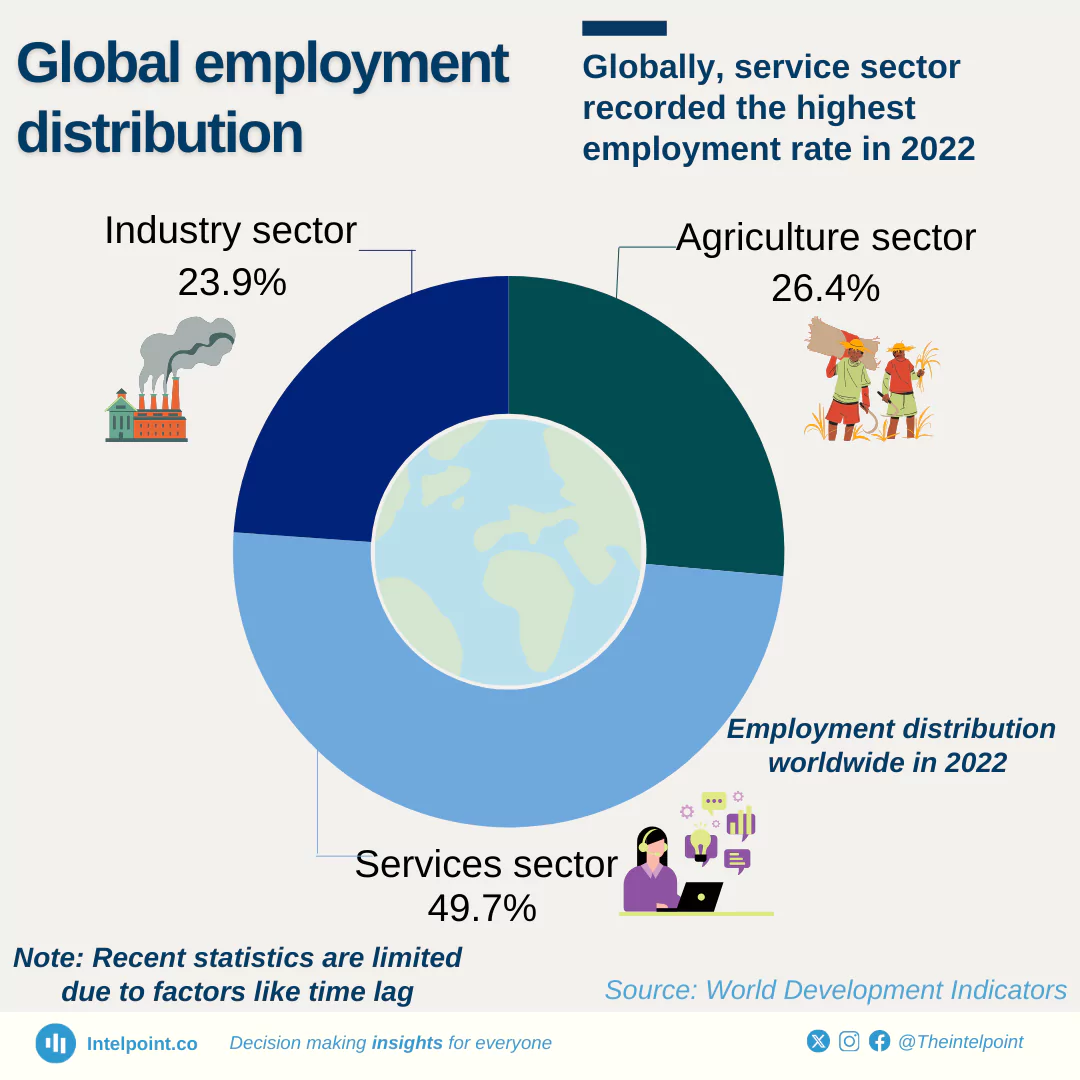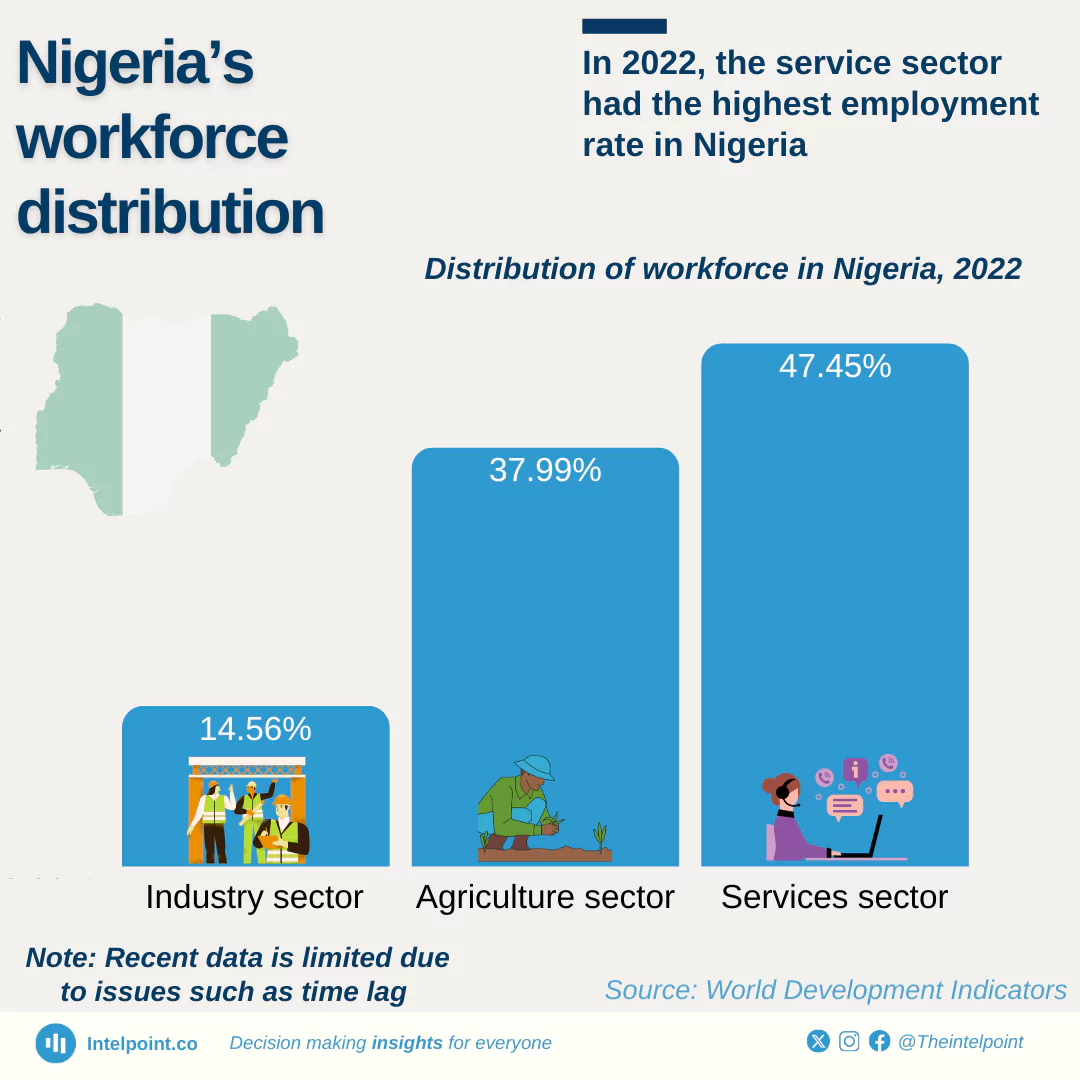As of 2022, the Agriculture sector accounted for the largest portion of employment by economic activities, representing approximately 52% of employment in sub-Saharan Africa. The Service sector encompassed about 37% of employment, while the Industry sector made up roughly 12% of employment. The employment figure in the Industry sector reflects the degree of industrialisation in sub-Saharan Africa





